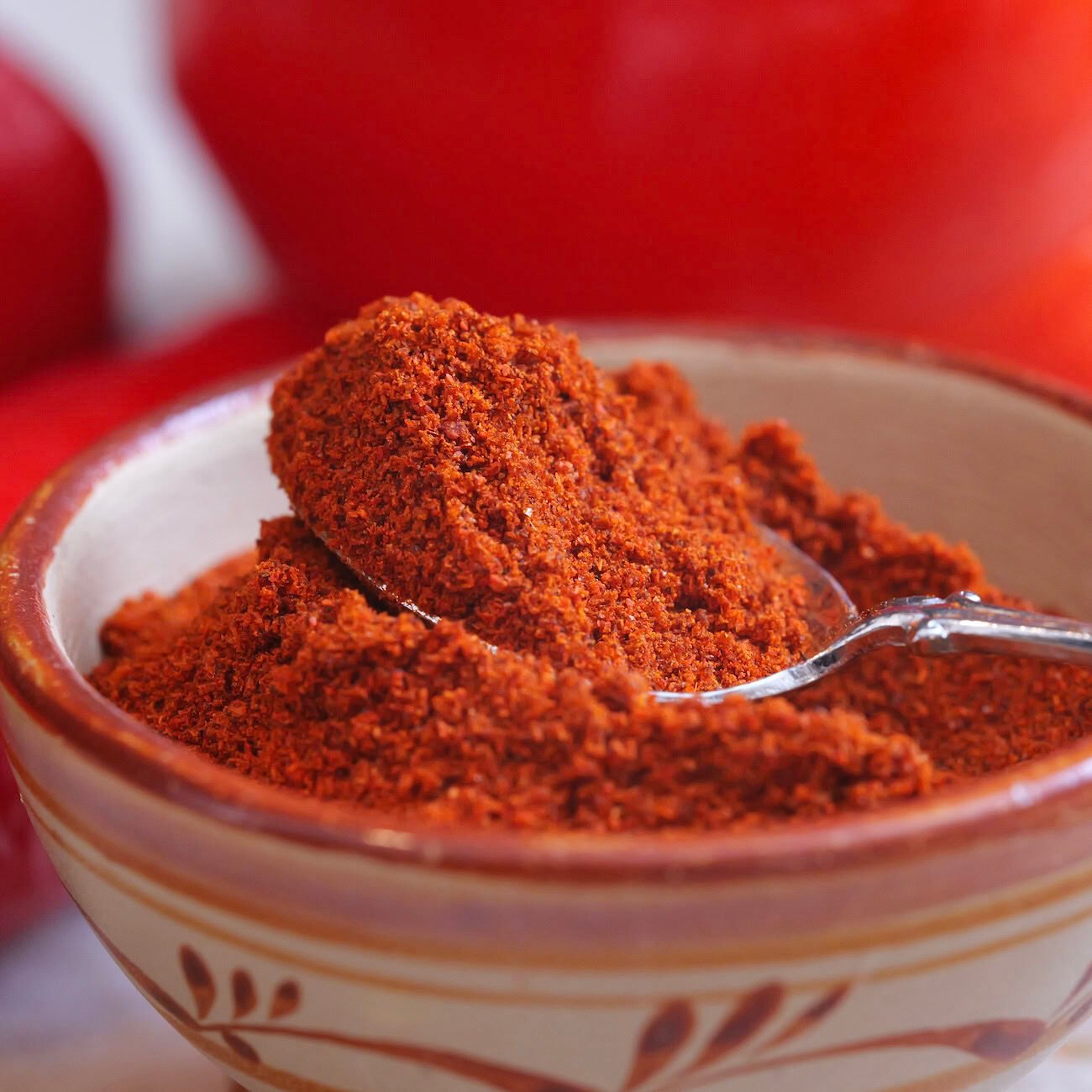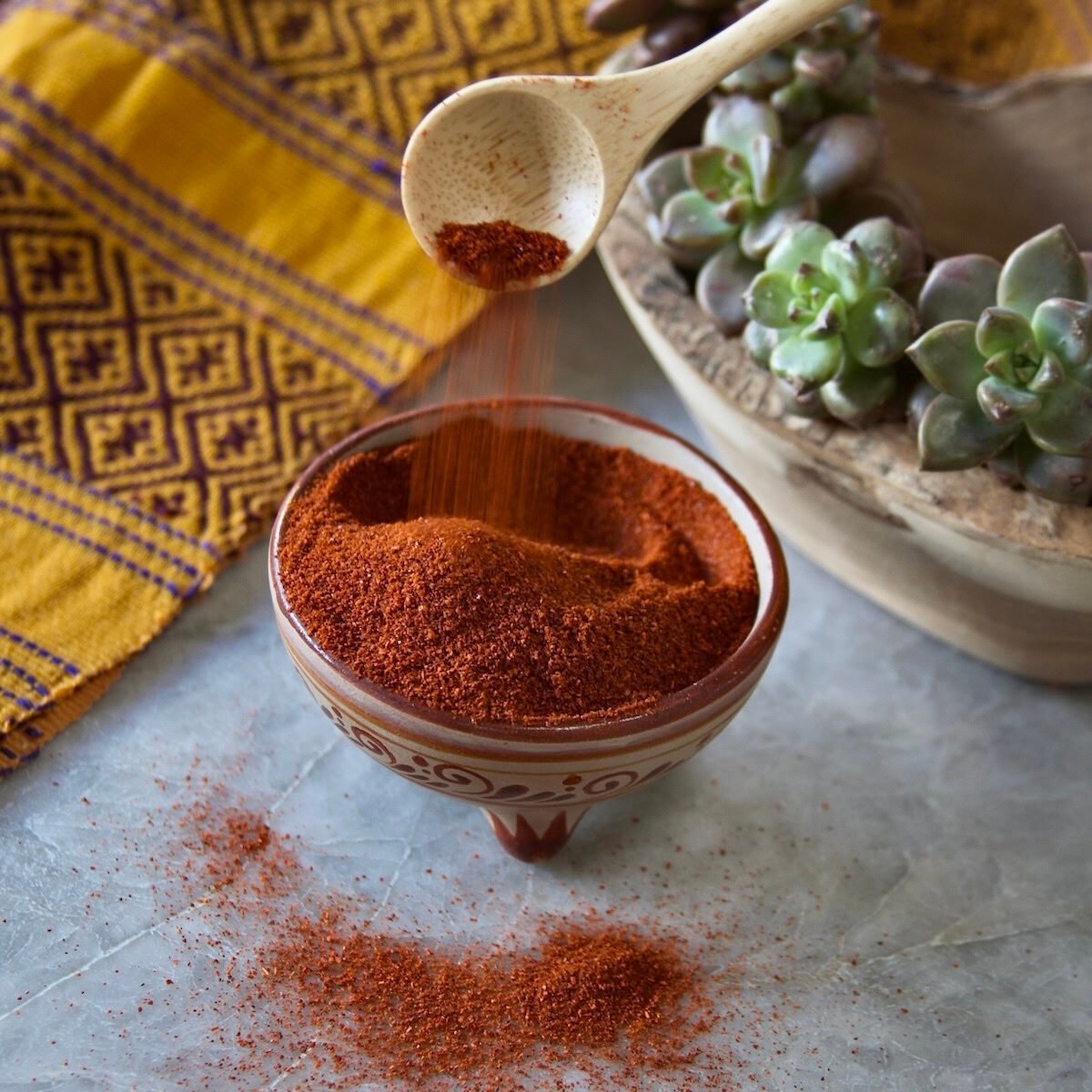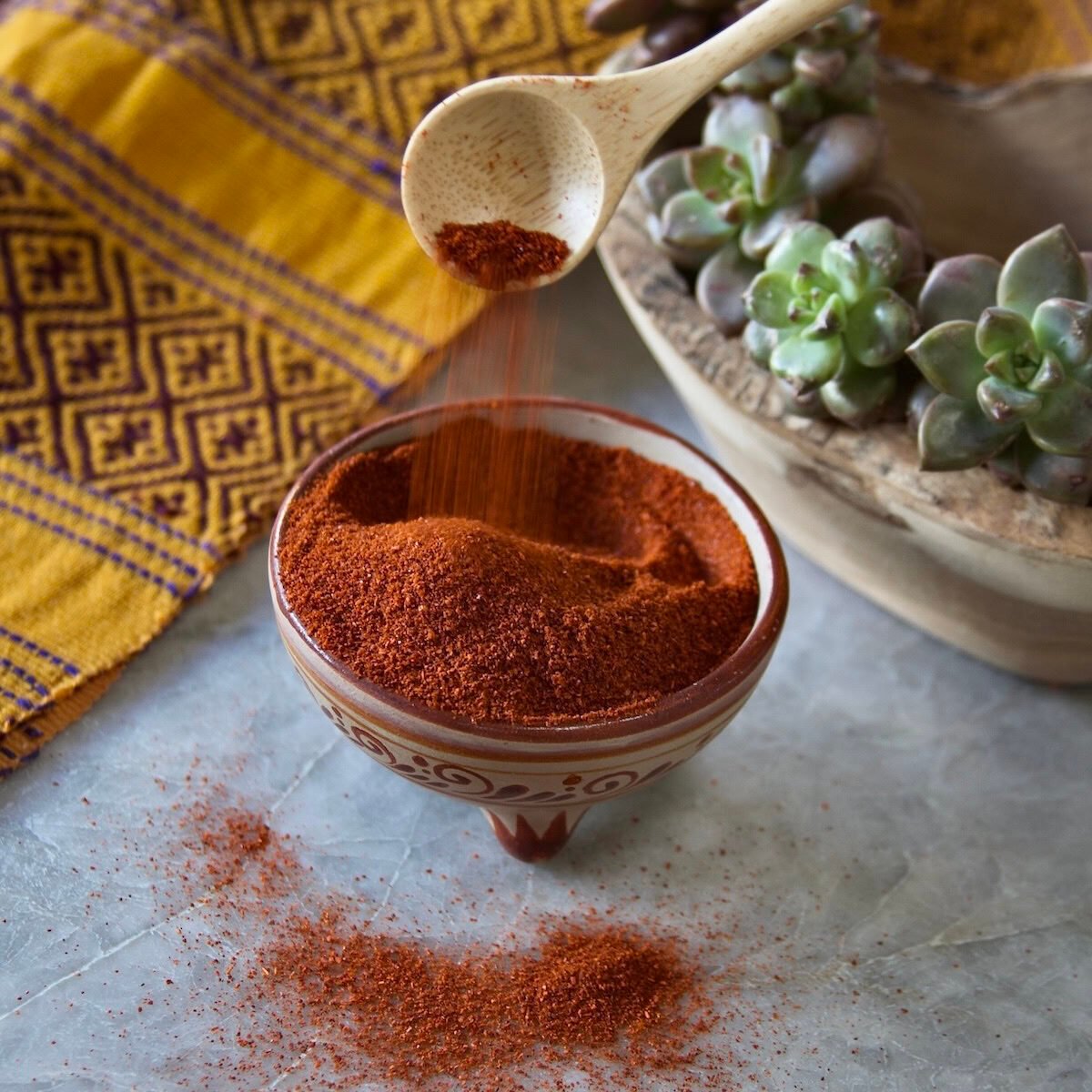Paprika
Paprika is the spice produced from dried and ground red pepper varieties of the species Capsicum annuum in the nightshade family.

REGION OF ORIGIN
Paprika is made from chiles from Central Mexico. However, the spice was truly invented in Spain and Hungary, where chiles were dried, smoked, and blended in new ways (Spain) and bred for milder, sweeter varieties (Hungary).
PART & COLOR
Paprika is made from a wide spectrum of peppers, from sweet bell to hot chile peppers. The color varies due to the cultivars and parts used as well as the drying process. Sweet paprika, using mainly the flesh of bell peppers, is a vibrant red or deep orange color. Hot paprika is a browner red due to the inclusion of chiles and their seeds and veins. Smoked paprika, dried over oak wood fires, is a deeper, darker, brick-red hue.
HARVEST
Paprika peppers are warm-season annuals, requiring full sun and well-drained soil to thrive. They are typically planted in the spring and reach maturity by late summer to early autumn. When they display a deep red color, they are carefully hand-picked to avoid damaging the plant or fruit. They are then dried and ground into the fine red powder.

FLAVOR & AROMA PROFILE
Because of the many pepper cultivars and preparation methods used to make paprika, the spice can take on various aromas and flavors. Sweet paprika’s aroma is earthy, sweet, and slightly fruity with a gentle warmth. Its flavor combines a light sweetness with a slow-building, mild heat. Hot paprika's scent is stronger, with a more pronounced spiciness that noticeably hits the nostrils. Not surprisingly, it also tastes bolder and hotter, with a lingering heat that varies in intensity according to the chili cultivars used and the amount of seeds and veins present. The most nuanced of the three, smoked paprika, has a rich, smoky flavor and aroma reminiscent of a campfire, but with undertones of sweetness and spice.
There are many versions of each of these main three types—such as sweet smoked and hot smoked paprika—as well as many regional variations. Each variety offers something unique to your repertoire.
CULINARY USES
Known for its vivid hues and wide range of flavors, paprika is indispensable to kitchens worldwide. Cooks love adding sweet paprika to roasted vegetables, potato salad, deviled eggs, and various soups and rice dishes. Its subtle sweetness and pop of color never disappoint. Famous savory spice blends like baharat and berbere aren't complete without sweet paprika, and it's also the key ingredient in classic stews like Hungarian goulash and chicken paprikash (clearly).
For those of us who crave a bit more heat, though, hot paprika is a great choice for grilled meats, fish, and vegetables. It’s also a crucial addition to spicy sausages like chorizo, and just a pinch can add a delightful warmth to hummus. Smoked paprika is perfect for adding complexity to barbecue sauces, chili, and meats, and is the prominent flavor in the beloved Spanish dish patatas bravas. Feel free to add it liberally to soups, stews, marinades, oils, and vinegars.



